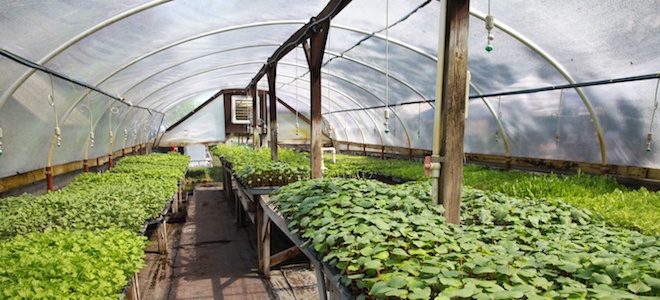When attempting to grow plants indoors or in a greenhouse, the challenge is controlling the climate. Essentially, cultivators have the unique task of copying the natural environment of the plants they are growing indoors. This requires strict attention to detail as well as climate control equipment. Precise conditions concerning temperature and humidity levels can determine whether or not the plants grow as they should.
What is Indoor Growing?
Indoor growing operations seek to mimic an outdoor climate indoors. Plants are given a limited amount of sunlight, or artificial light in order to promote growth. They are generally mild to moderate in temperature with controlled amounts of humidity. Indoor growing operations rely heavily on climate control as their plants are being distributed to consumers. Therefore, traditional growers and hydroponics need proper ventilation for cannabis, produce, and other plants. When mimicking these conditions, unique appliances are needed to ensure optimal growth. Let’s consider the best climate conditions for indoor horticulture as well as hydroponics in ensure successful growing operations.
Hydroponics
Grow rooms work to mimic moving, fresh air that promotes plant growth and eliminates mold or pests. This is why vent fans, air scrubbers, and dehumidifiers are ideal for air circulation. In addition, excessive humidity can alter the density and structure of the plant. Portable HVAC and cooling systems are important to removing excess moisture from the air and replacing it with dry, positive air. Negative Air Machines work to convert this negative air, remove the pollutants, and eliminate the spread of harmful bacteria. Because hydroponic cultivators perform their work in an enclosed space, the importance of air ventilation is vital. Air movers are unique units that work to circulate the air and provide optimal ventilation. When considering an adequate temperature, the average range should be between 72 and 76 degrees with 51 to 61 percent humidity, though this will of course vary depending on the plants being grown.
Greenhouse Climate Control
Greenhouse conditions are quite similar to hydroponic growing when it comes to climate control. Since a greenhouse is exposed to the sun, the temperature and ventilation levels are bound to change. These structures trap heat so as to manage humidity and temperature levels. When attempting to bring the temperature down, air conditioning systems can be used to help ventilate the air. Since a greenhouse doesn’t need constant air conditioning, temporary cooling units are a valuable option towards controlling the temperature during the hottest days of the year that might otherwise cause damage to the plants. This temporary cooling may also reduce humidity.
In addition, humidity levels need to be controlled inside greenhouses. Portable dehumidifier units can help to reduce moisture from the air and reduce vapor. Since plants release their own natural moisture through transpiration, humidity levels are consistently high. Portable dehumidifiers are handy when outside climates are extremely humid and the gardener wants to limit the levels.
When housing indoor plants, it’s important to consider the natural elements they would be exposed to and seek to mimic those indoors. Climate control and adequate lighting are essential to boosting growth and creating a healthy environment for plants to thrive in, so your plants can produce the flowers, fruits, and vegetables that will make your business successful.

